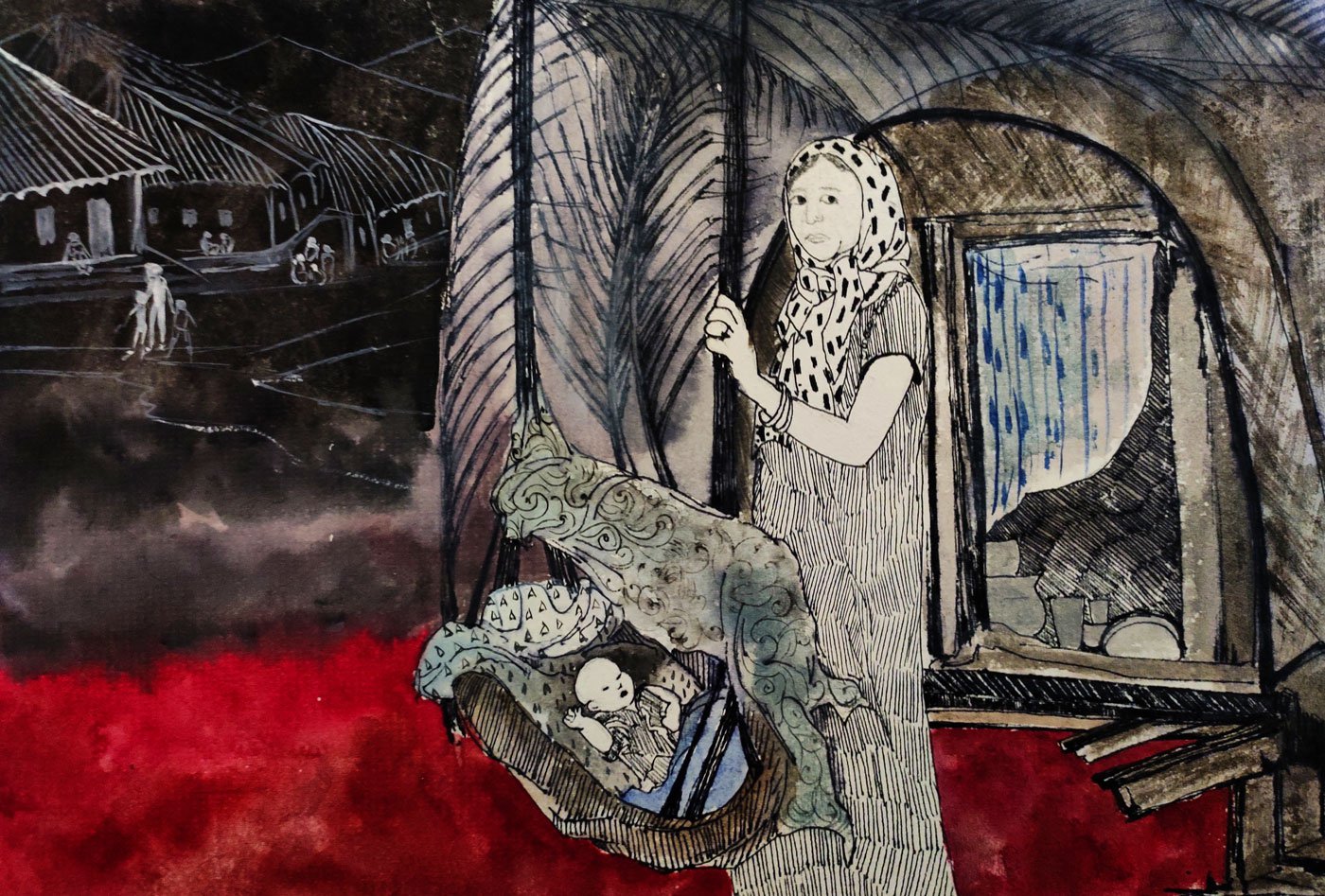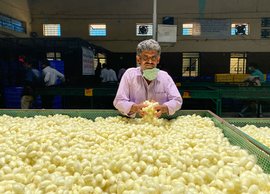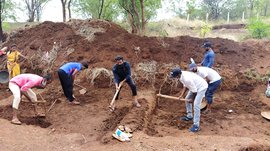Anu is sitting on a half-torn plastic mat under a tree one morning, hair askew, looking pale. People passing by speak to her from a distance. Cattle rest nearby and stacks of fodder are drying in the sun.
“Even when it rains, I sit with an umbrella under the tree and don’t step into my house. Even my shadow shouldn’t fall on anyone. We cannot afford to anger our god,” Anu says.
The tree in an open field, around 100 metres away from her house, is her ‘home’ for three days every month after she begins menstruating.
“My daughter leaves food for me on a plate,” adds Anu (name changed). She uses a separate set of utensils during these days of segregation. “It is not at all like I rest here for pleasure. I want to work [at home], but stay here out of respect for our culture. I do still work in our field though when there is a lot to be done.” Anu’s family cultivates ragi on their 1.5 acres.
Though largely on her own during these days of isolation, Anu is not alone in following this practice. Her daughters, 19 and 17 years old, do the same (another 21-year-old daughter is married). And all the women in her hamlet of around 25 families from the Kadugolla community are required to segregate in a similar manner.
Women who have just been through childbirth face severe restrictions too. Around six huts near Anu’s tree-shelter, each some distance from the other, are home to them and their babies. These remain vacant at other times. Those who are menstruating are expected to simply spend time under trees.
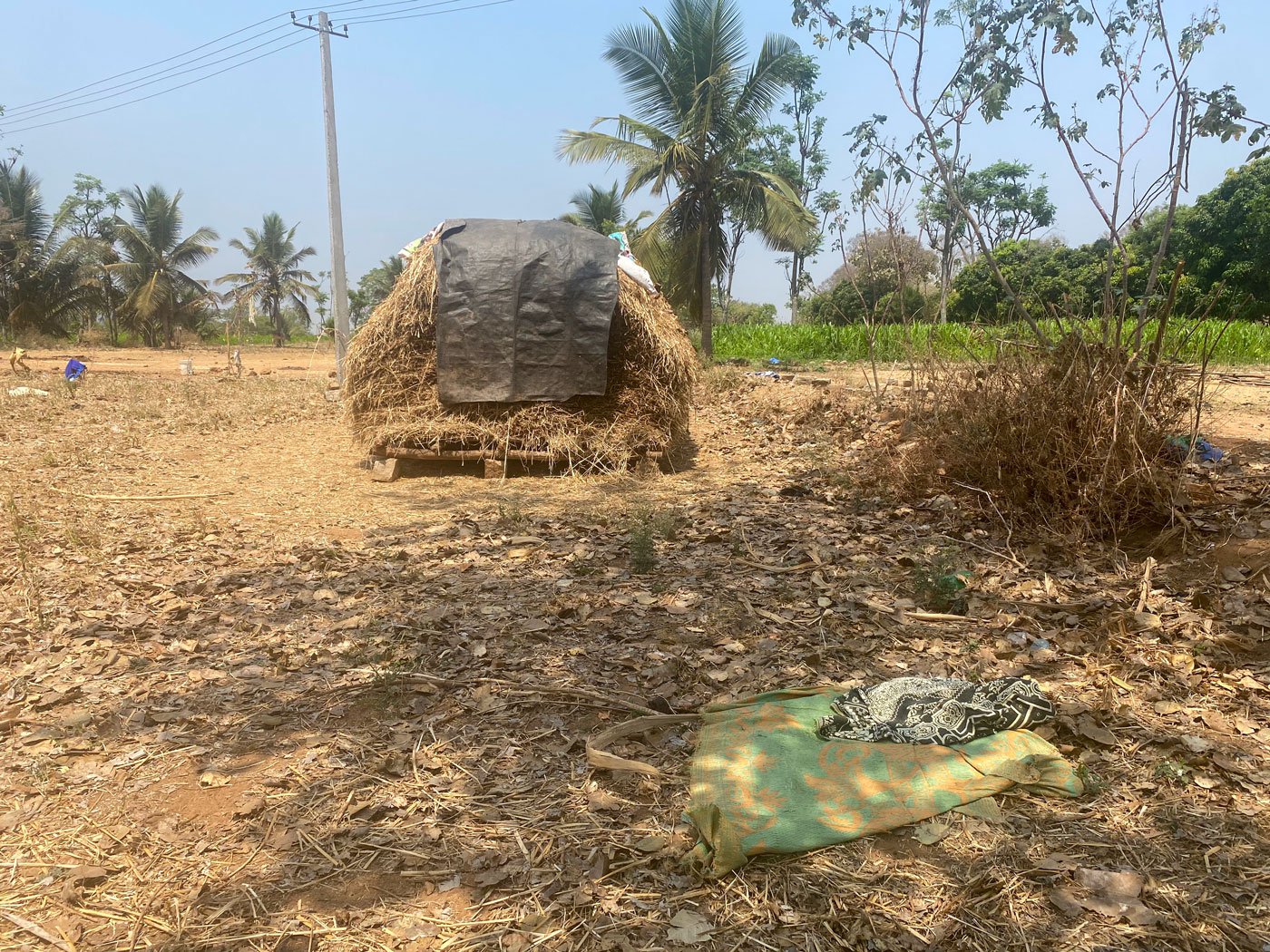
A mat under a tree shelters Anu for three days every month, and the huts nearby are home to women with newborn babies
The cluster of huts and trees is located in a kind of ‘backyard’ of the hamlet, which is to the north of Aralalasandra, a village with a population of 1070 (Census 2011) in Channapatna taluk of Karnataka’s Ramanagara district.
The ‘quarantined’ menstruating women use the privacy of bushes or the vacant huts for their personal needs. Water is provided by family members or neighbours in tumblers and buckets.
Women with a newborn baby have to spend at least a month in the secluded huts. Among them is Pooja (not her real name), a homemaker who received her BCom degree after she got married at the age of 19. She had a baby in February 2021 in a private hospital in Bengaluru, roughly 70 kilometres away. “I had an operation [C-section]. My in-laws and husband came to the hospital, but they can’t touch the baby for the first one month as per our custom. After returning to my parents’ village [the Kadugolla hamlet of Aralalasandra; she and her husband live in another village in the same district], I stayed in a hut for 15 days. Then I moved to this hut,” Pooja says, pointing to a shack right in front of her parents’ house. She moved back into the main house with the baby only after completing 30 days outside.
As she speaks, her baby starts crying. She puts him in a swing made of a saree that belongs to her mother. “She [Pooja] stayed in a secluded hut only for 15 days. In our village, we have become lenient. In other [Kadugolla] villages, after delivery, a mother has to stay in a hut with the baby for more than two months,” says Pooja’s mother Gangamma, who is in her 40s. The family rears sheep and cultivates mango and
ragi
on their one-acre farmland.
Pooja listens to her mother, her baby now asleep in the swing. “I have not faced any problem. My mother is here to guide me. It is just very hot outside,” she says. Now 22, she wants to study for an MCom degree. Her husband works as an attendant in a private college in Bengaluru. “He too wants me to follow this custom,” she says. “Everyone wants me to do it. I didn’t want to stay here. But I didn’t fight. This is what all of us are supposed to do.”
*****
The practice prevails in other Kadugolla hamlets too – these habitations are all locally called Gollaradoddi or Gollarahatti. The Kadugollas, historically nomadic shepherds, are listed as an OBC in Karnataka (though they have been seeking categorisation as a Scheduled Tribe). Their numbers in Karnataka are probably between 300,000 (as estimated by P. B. Basavaraju, deputy director, Backward Classes Welfare Department, Ramanagara) to 1 million ( according to a former member of the Karnataka Backward Classes Commission who didn’t wish to be named). Basavaraju says that the community mainly lives in 10 districts in the southern and central parts of the state.
![Left: This shack right in front of Pooja’s house is her home for 15 days along with her newborn baby. Right: Gangamma says, 'In our village, we have become lenient. In other [Kadugolla] villages, after delivery, a mother has to stay in a hut with the baby for more than two months'](/media/images/03a-IMG_9229-TN.max-1400x1120.jpg)
![Left: This shack right in front of Pooja’s house is her home for 15 days along with her newborn baby. Right: Gangamma says, 'In our village, we have become lenient. In other [Kadugolla] villages, after delivery, a mother has to stay in a hut with the baby for more than two months'](/media/images/03b-IMG_9240-TN.max-1400x1120.jpg)
Left: This shack right in front of Pooja’s house is her home for 15 days along with her newborn baby. Right: Gangamma says, 'In our village, we have become lenient. In other [Kadugolla] villages, after delivery, a mother has to stay in a hut with the baby for more than two months'
Around 75 kilometres from Pooja’s hut, in the Kadugolla hamlet of D. Hosahalli village in Tumkur district, Jayamma too is resting one afternoon against a tree on the road in front of her house. It’s the first day of her monthly menstrual period. A narrow open drain flows right behind, a steel plate and glass are kept on the ground next to her. She sleeps under a tree for three nights every month – even during the rains, she insists. Her kitchen tasks at home are put on hold, but she still takes the family’s sheep for grazing to nearby open tracts.
“Who would like sleeping outdoors? she asks. "But everyone does it because god [the Kadugollas are Krishna devotees] wants us to do it,” she says. “I held a cover [tarpaulin sheet] yesterday and sat here when it was raining.’
Jayamma and her husband both rear sheep. Their two sons, in their 20s, work in factories in Bengaluru. “When they get married, even their wives will have to sleep outside during this time because we have always followed this custom,” she says. “Things won’t change just because I don’t like it. If my husband and others in the village agree to stop the practice, I’ll start staying in my house during those days.”
Other women in the Kadugolla hamlet of D. Hosahalli village of Kunigal
taluk
must do the same. “In my village, women stay out for first three nights when they have their periods and return on the morning of the fourth day,” says 35-year-old Leela M.N. (not her real name), a local
anganwadi
worker. She too stays outside when menstruating. “This is a habit. Nobody wants to discontinue the practice because of fear of god,” she adds. “At night a male member of the family – brother, grandfather or husband – keeps watch from the house or stays outside, maintaining distance,” Leela adds. “Fourth day, if the women are still menstruating, they stay away from family members inside the house. Wives don't sleep with husbands. But we work at home.”
Though staying out every month has become a routine banishment for the women in this and other Kadugolla hamlets, the practice of segregating menstruating or postpartum women is prohibited by law. The Karnataka Prevention and Eradication of Inhuman Evil Practices and Black Magic Act, 2017 (notified by the government on January 4, 2020), bans a total of 16 practices including “evil practices against women by forcing isolation, prohibiting re-entry into the village or facilitating segregation of menstruating or postpartum women.” It mandates imprisonment from 1 to 7 years, as well as a fine for violators.
But the law has not deterred even ASHAs and
anganwadi
workers from the Kadugolla community, who handle community healthcare, from following these practices. D. Shardamma (not her real name) an ASHA worker in D. Hosahalli, stays in the open too every month during her period.
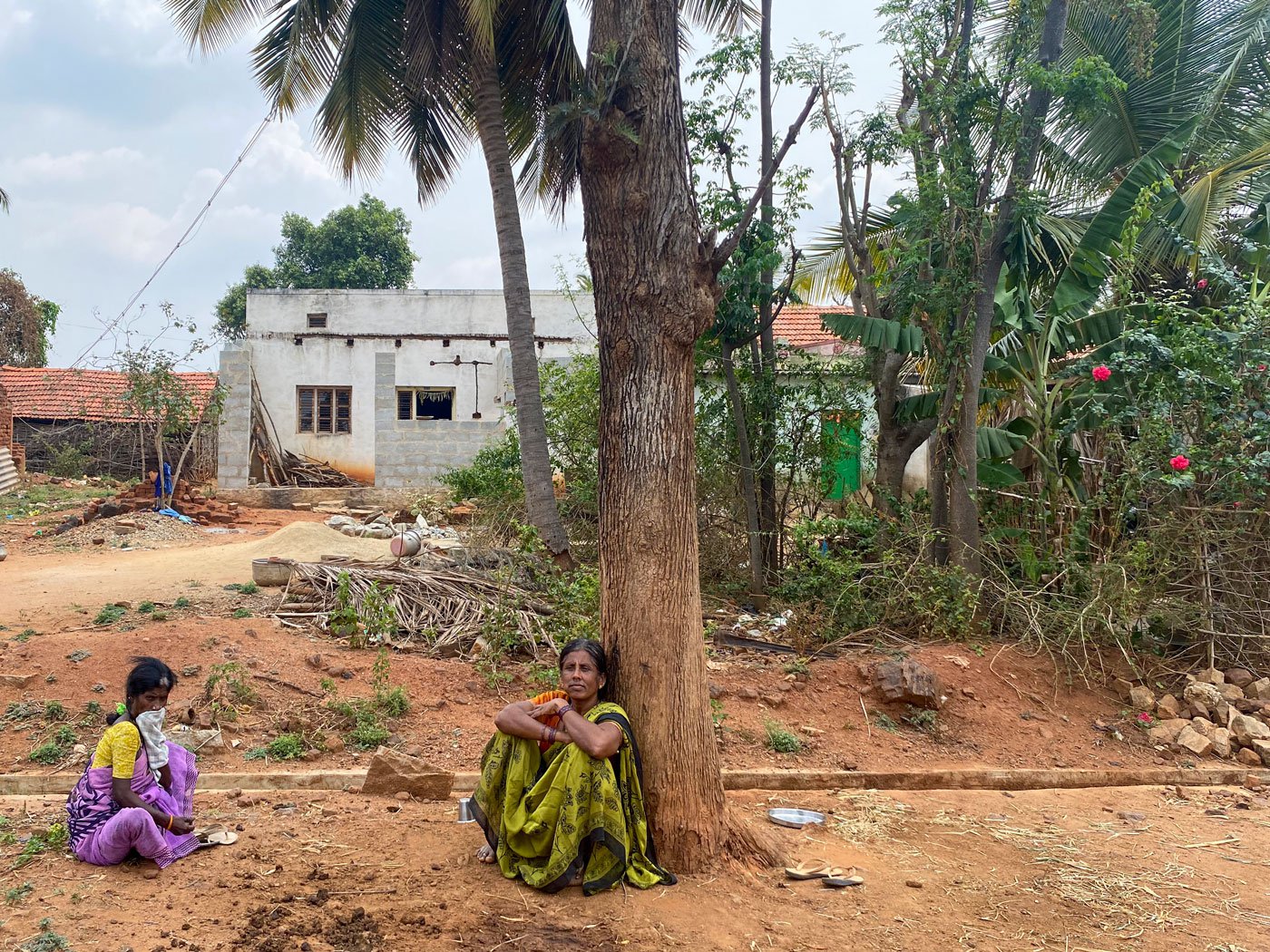
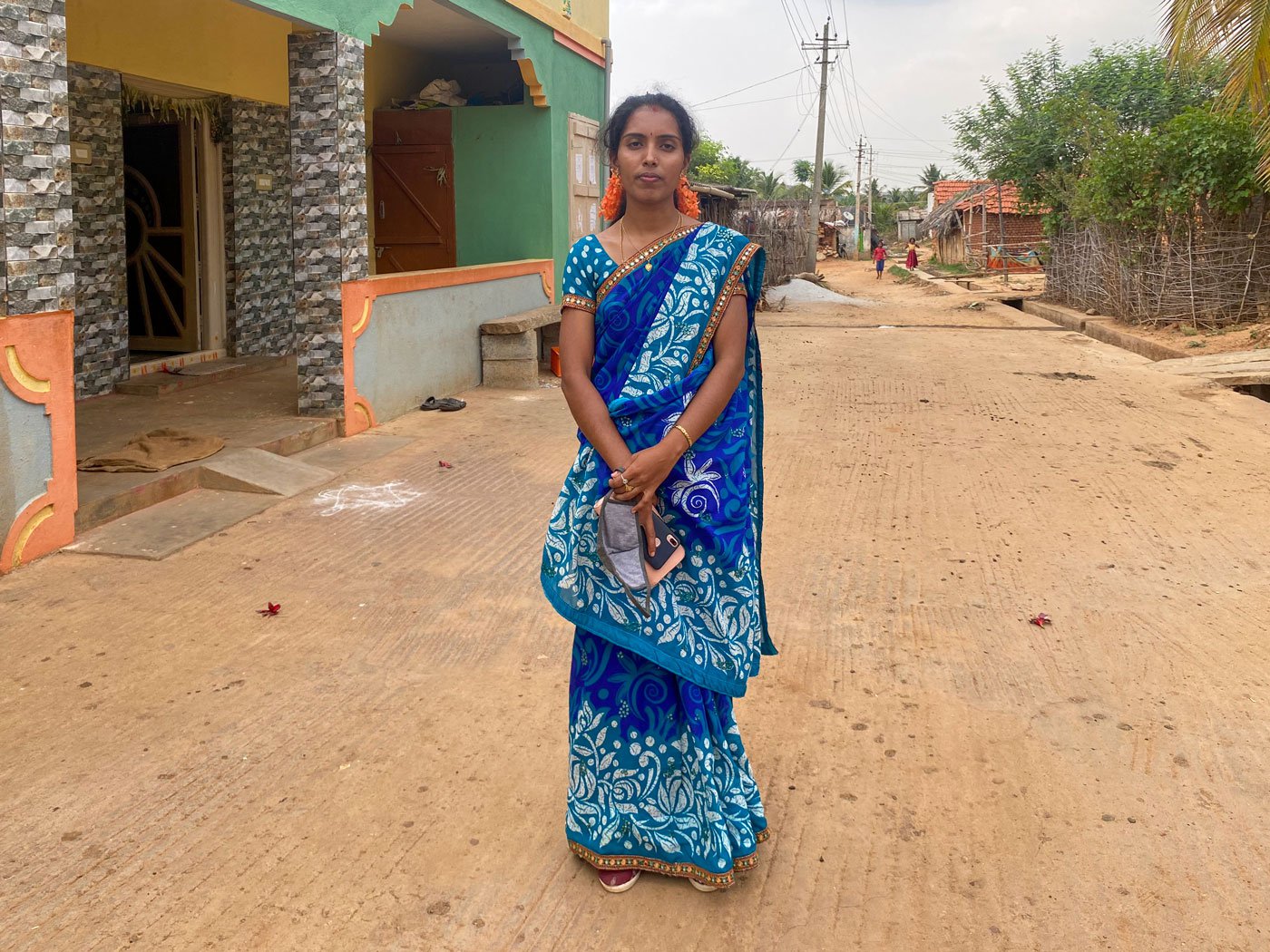
Jayamma (left) sits and sleeps under this tree in the Kadugolla hamlet of D. Hosahalli during her periods. Right: D. Hosahalli grama panchayat president Dhanalakshmi K. M. says, ' I’m shocked to see that women are reduced to such a level'
“Everyone in the village does this. In Chitradurga [a neighbouring district], where I grew up, they have stopped because they felt it is not safe for women to stay out. Here everyone feels god will curse us if we don’t follow this tradition. As part of the community, I also do it. I can’t change anything alone. And I have never faced any problem staying out,” says Shardamma, who is around 40. “
These practices prevail even in households of government employees from the Kadugolla community – as it does in the family of 43-year-old Mohan S. (not his real name), who works with the D. Hosahalli
grama panchayat
. When his brother’s wife, who has MA-BEd degrees, had a baby in December 2020, she stayed outside with the baby for two months in a hut specially built for them. “They entered our home only after completing the mandatory period outside," Mohan says. His 32-year-old wife Bharthi (not her real name) nods in agreement: “I too don’t touch anything when I have periods. I don’t want the government to change this system. What they can do is build a room for us where we can stay, instead of sleeping under trees.”
*****
Over time, attempts have been made to build such rooms. On July 10, 2009, media reports note, the Karnataka government passed an order to build a mahila bhavan outside every Kadugolla hamlet to accommodate 10 menstruating women at a time.
Well before this order was passed a one-room cement structure had been built by the local panchayat in Jayamma’s hamlet in D. Hosahalli village. Kunigal
taluk
panchayat member Krishnappa G.T. says that the room was built around 50 years ago, when he was a child. The women of the village used it for a few years instead of sleeping under trees. The now dilapidated structure is overrun by weeds and creepers.
Similarly, a half-broken room built for this purpose in the Kadugolla hamlet in Aralalasandra is no longer in use. “Around four-five years ago, some district officials and panchayat members visited our village,” Anu recalls. “They asked the [menstruating] women staying outside to go home. They said staying outside is not good. They left after we vacated the room. Then everyone returned to the room. After a few months, they came again and told us to remain inside our homes during our periods and started breaking the room. But the room was actually useful for us. At least we could use the toilet without much trouble.”
In 20014, Umashree, former minister for Women and Child Welfare, attempted to speak out against these beliefs of the Kadugolla community. In a symbolic act, she broke parts of the room constructed for menstruating women in the Kadugolla hamlet of D. Hosahalli. “Umashree madam asked our women to stay inside their homes during periods. Some agreed when she visited our village, but nobody stopped the practice. She came with police protection and the village accountant and broke the door and some parts of that room. She had promised to develop our area, but nothing really happened,” says
taluk
panchayat member Krishnappa G. T.
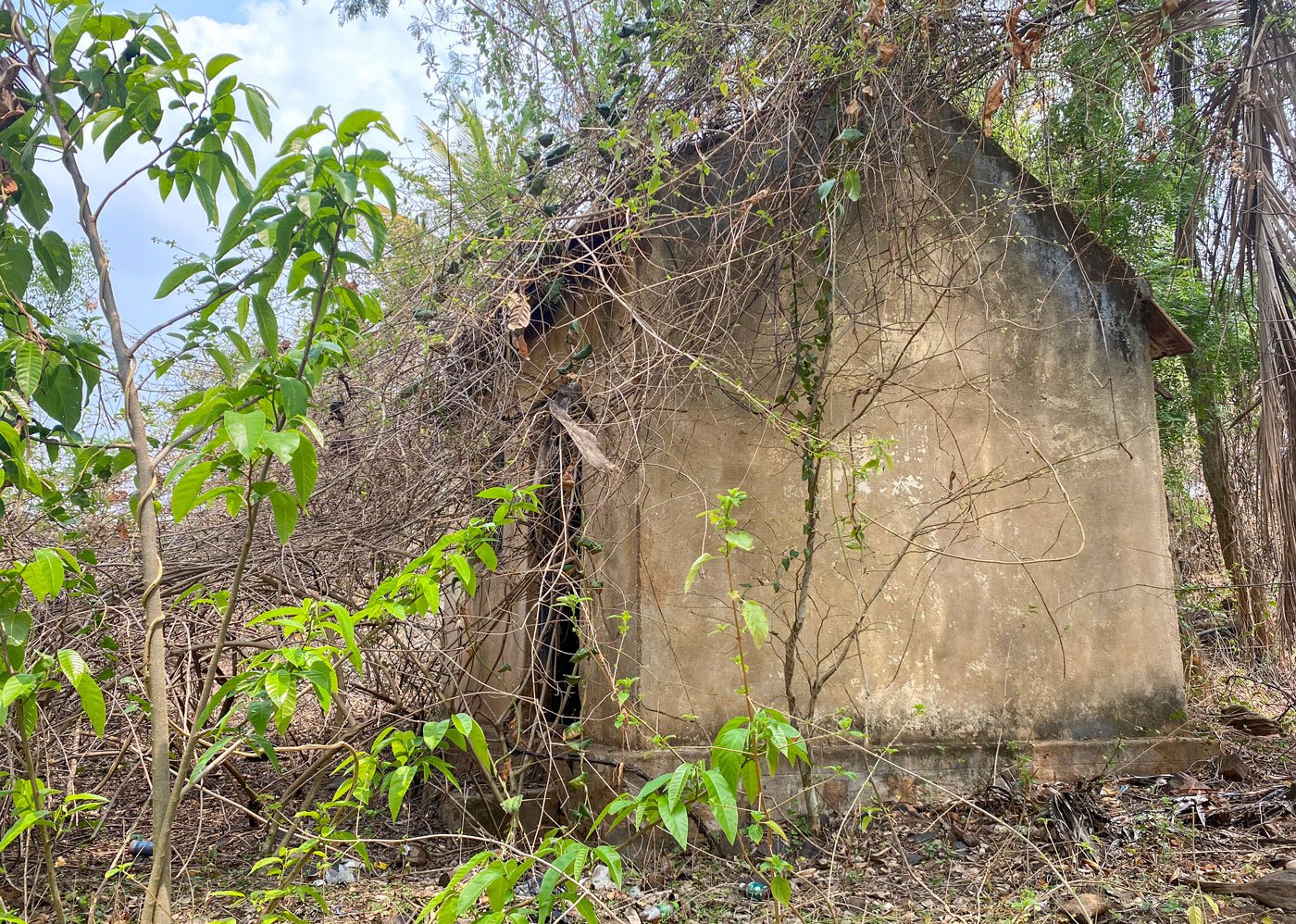
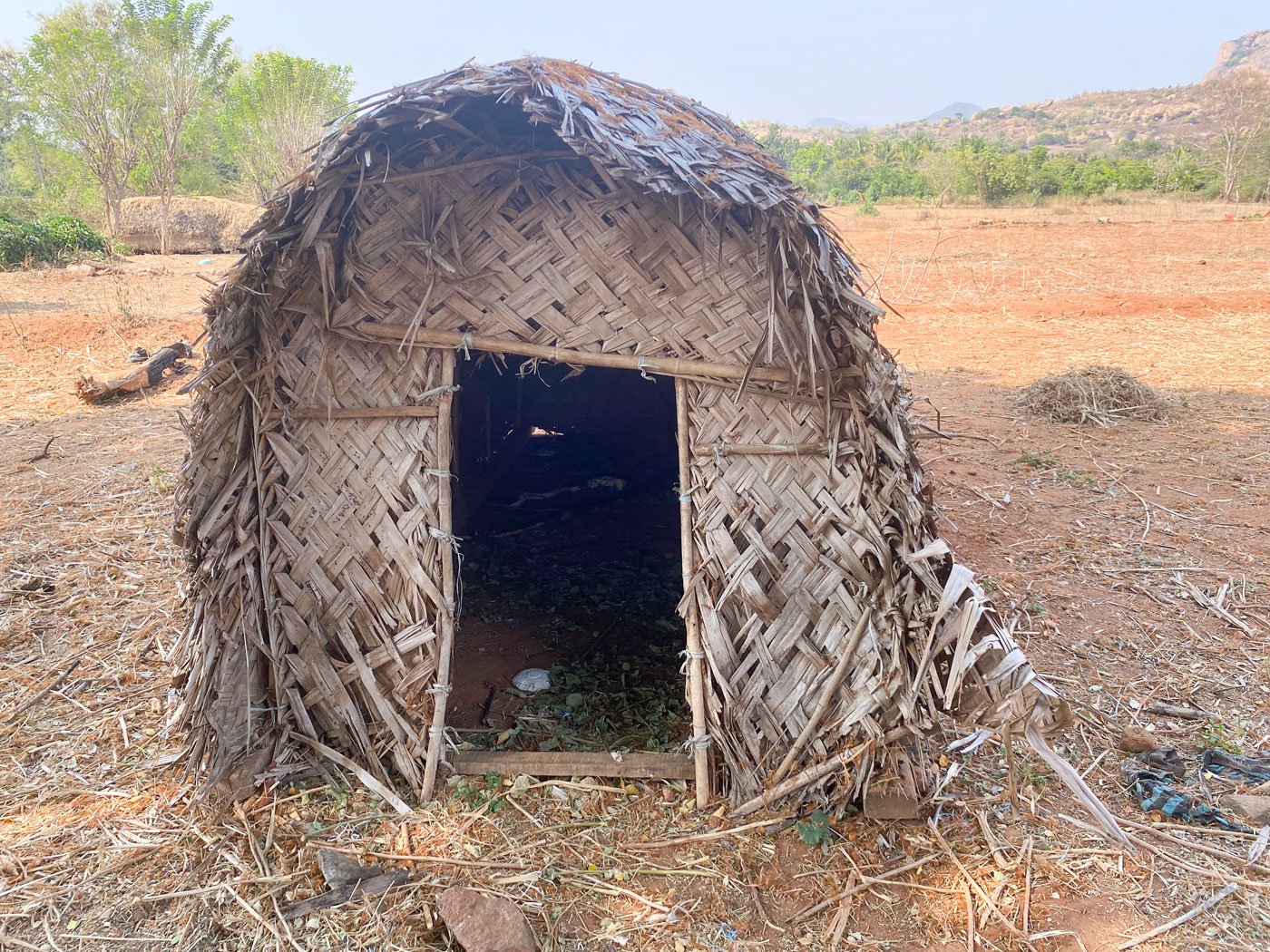
A now-dilapidated room constructed for menstruating women in D. Hosahalli. Right: A hut used by a postpartum Kadugolla woman in Sathanur village
Still, Dhanalakshmi K. M. (she does not belong to the Kadugolla community) who became D. Hosahalli
grama panchayat
president in February 2021, revisits the suggestion to build separate rooms. “I’m shocked to see that women are reduced to such a level that they have to live outside their own homes during a crucial time like postpartum and periods," she says. "I’ll try to at least propose building separate homes for them. The sad part is even young educated girls don't want to stop doing this. How can I bring much change if they are resisting change themselves?”
The debate over the rooms, add others, should decisively be closed. "Even if separate rooms for women might be of help, we want them to stop the practice completely," says P. B. Basavaraju of the District Backward Classes Welfare Department. "We speak to Kadugolla women and counsel them to discontinue these superstitious customs. In the past, we even conducted awareness campaigns."
Constructing separate rooms for menstruating women isn’t the solution, emphasises K. Arkesh, retired inspector general of the Central Reserve Police Force, who is from a village near Aralalasandra. “The Krishna Kuteers [as the rooms came to be called] were simply legitimising this practice. The basic concept that women are impure at any point should be rubbished, not validated,” he says.
“These dogmatic practices are extremely cruel," he adds. "but the social pressure is such that women do not organise and fight. Sati was abolished only after a social revolution. There was a will to bring change. Due to electoral politics, our politicians are not willing to even touch these subjects. A combined effort is required involving politicians, social workers and people from the community.”
*****
Until then, the fear of divine retribution and of social stigma runs deep and continues to drive the practice.
“If we don’t follow this tradition, bad things will happen to us,” says Anu, of the Kadugolla hamlet of Aralalasandra. “Many years ago, we heard that in Tumkur a woman refused to stay outside during periods and her house was mysteriously burnt.”
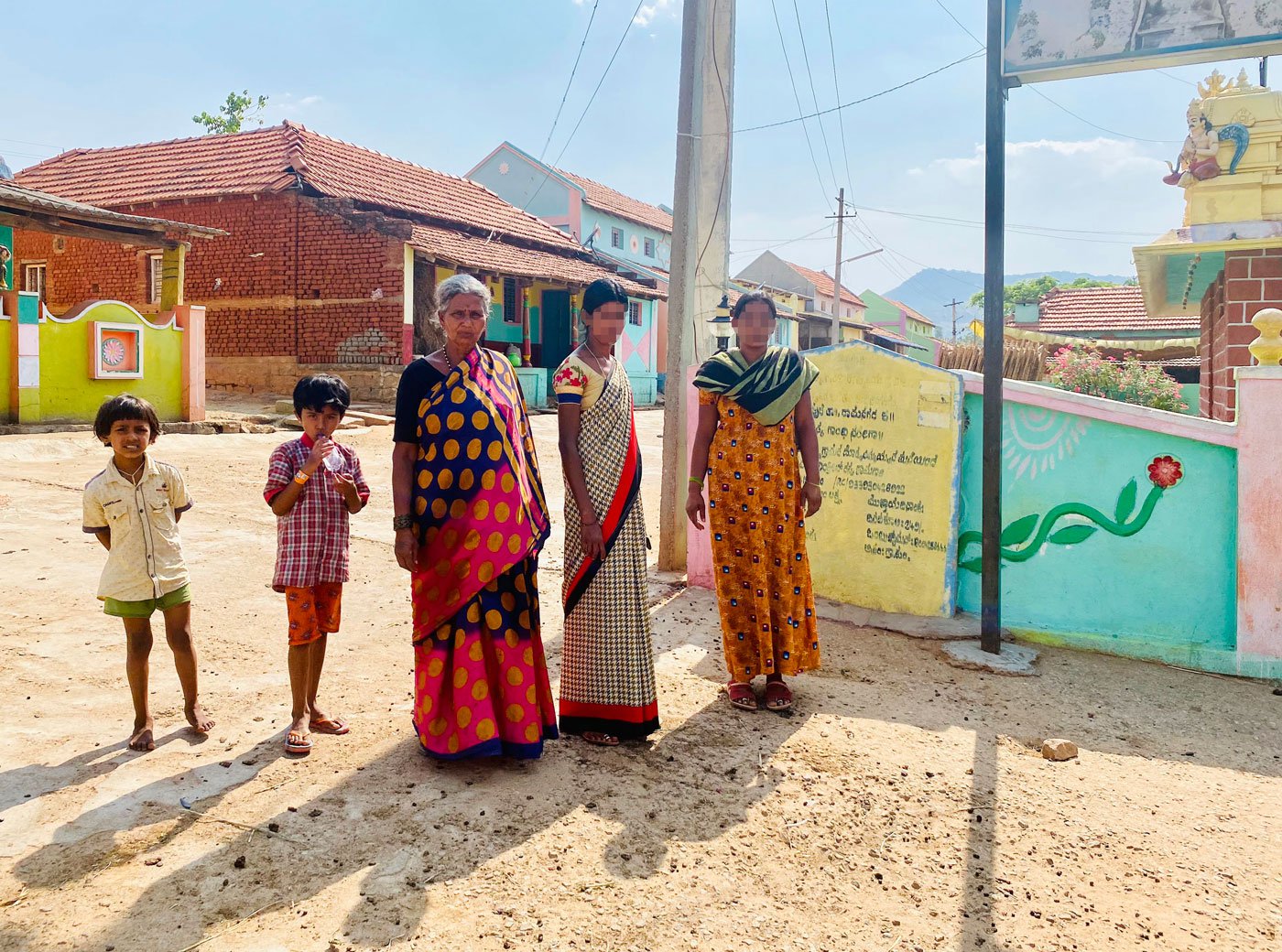
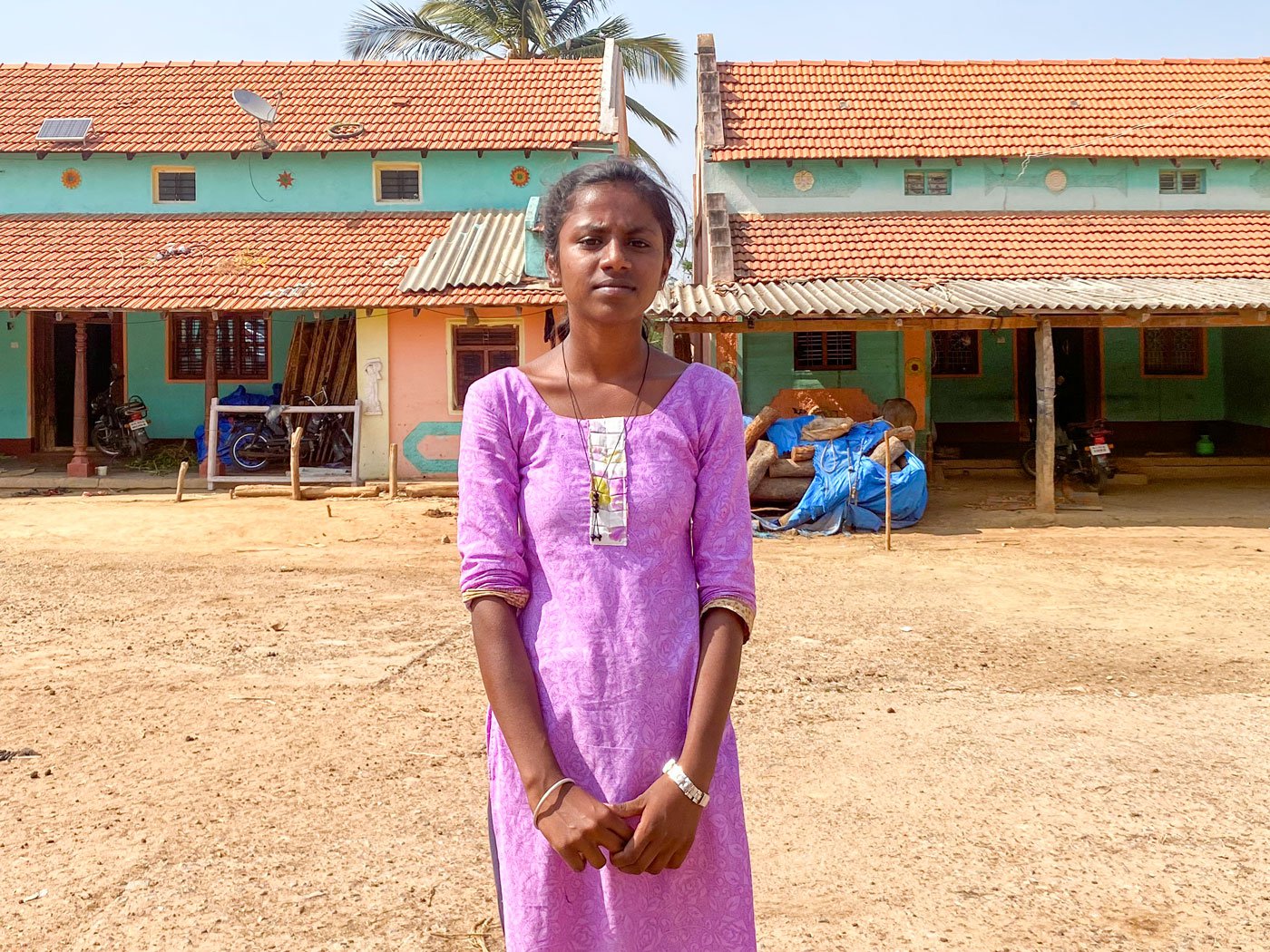
Anganwadi worker Ratnamma (name changed at her request; centre) with Girigamma (left) in Sathanur village, standing beside the village temple. Right: Geeta Yadav says, 'If I go to work in bigger cities in the future, I’ll make sure I follow this tradition'
“This is how our god wants us to live and if we disobey then we have to face the consequences,” says Mohan S. of the D. Hosahalli grama panchayat. If this system is stopped, he adds, “diseases will increase, our goats and sheep will die. We will have many problems, people will suffer losses. This system should not be stopped. We don’t want things to change.”
“In Mandya district, a woman was bitten by a snake when she was inside her house during periods,” says Girigamma of the Kadugolla hamlet in Sathanur village of Ramanagara district. Here, a
pucca
room with an attached bathroom built by the government still offers shelter to menstruating women. A narrow lane from the main village road leads to this room.
Geeta Yadav remembers being scared when she had to stay here alone for the first time three years ago, during her first period. “I cried and asked my mother not to send me. But she didn’t listen. Now, there’s always some aunty [other menstruating women] for company, so I can sleep peacefully. I attend classes and directly go to the room during periods. I just wish we had beds and didn’t have to sleep on the floor,” 16-year-old Geeta, a Class 11 student, says. “If I go to work in bigger cities in the future, I will stay in a separate room and not touch anything. I’ll make sure I follow this tradition. It is given a lot of importance in our village,” she adds.
While at the age of 16 Geeta sees herself as carrying forward the tradition, 65-year-old Girigamma underlines that women in their community don’t have any reason to complain when they get to rest during the mandated isolation days. “We too stayed outside in the sun and rain. There were times when I had to take shelter in houses of people of other castes during storms as I wasn’t allowed to enter any house of people of our caste,” she says. “Sometimes we ate food kept on leaves just lying on the ground. Now women have separate utensils. We are Krishna followers, how can women here not follow this tradition?”
“We just sit, sleep and eat during these three-four days. Otherwise, we are busy cooking, cleaning, running after our goats. We don’t have to do all these when we stay in periods home,” adds 29-year-old Ratnamma (not her real name), an
anganwandi
worker of Kabbal
grama panchayat
in Kanakapura
taluk
(within which Sathanur village is located).
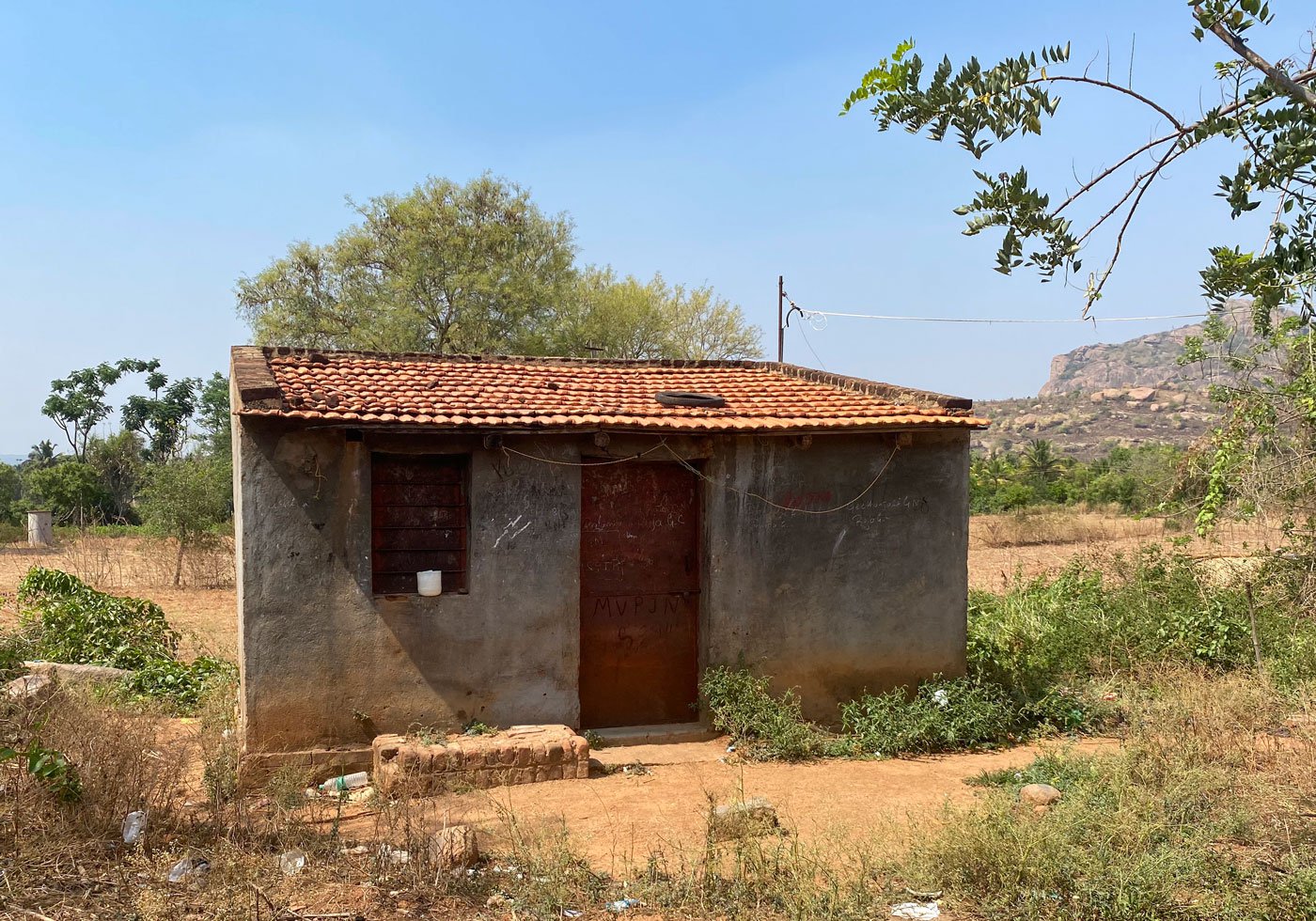
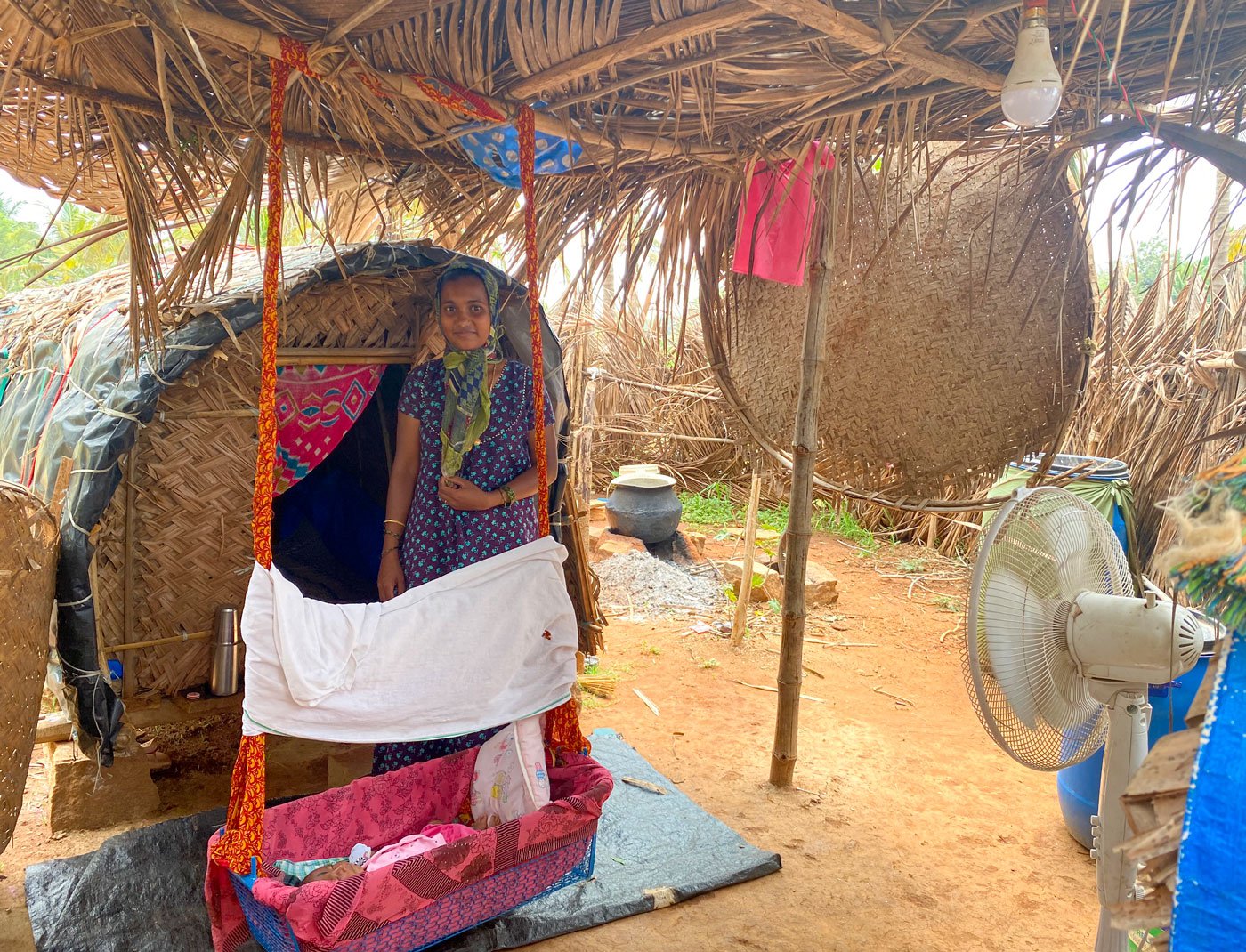
A state-constructed room (left) for menstruating women in Sathanur: 'These Krishna Kuteers were legitimising this practice. The basic concept that women are impure at any point should be rubbished, not validated'. Right: Pallavi segregating with her newborn baby in a hut in D. Hosahalli
Though Girigamma and Ratnamma see benefits in the segregation, these practices have resulted in many accidents and deaths. A December 2014 newspaper report noted that a newborn Kadugolla baby staying in a hut with his mother died due to the cold after rainfall in Tumkur. Another report speaks of a 10-day-old baby dragged away in 2010 by a dog in a Kadugolla hamlet in Mandya’s Maddur taluk .
Pallavi G., a 22-year-old homemaker in the Kadugolla hamlet of D. Hosahalli village, who had her first baby in February this year, dismisses these risks. “If there are two-three cases in so many years, it doesn’t bother me. This hut is actually comfortable. Why will I be scared? I have always stayed out in the dark during my periods. This isn’t new for me,” she says, cradling her baby.
Pallavi, whose husband works in a gas factory in Tumkur, sleeps with her child in a hut that is a few metres from another hut where her mother or grandfather stay to be nearby. In between the two small structures there is a standing fan and a bulb, and an outer area where a vessel is kept on a wood fire for heating water. Pallavi’s and her baby’s clothes are left for drying on top of her hut. After two months and three days, mother and child will be taken inside the house, around 100 metres from the hut.
A few Kadugolla families perform a ritualistic sheep sacrifice before bringing a newborn child and mother home. More commonly, a ‘purification’ ritual is performed, and the hut and all clothes and belonging of mother and baby are cleansed. The elders of the village guide the couple from a distance. Then they are taken to the local temple for the namkaran (naming) ceremony; there they pray and eat –and then are allowed to enter their house.
*****
But there are slivers of resistance too.
D. Jayalakshmma, who lives in the Kadugolla hamlet of Aralalasandra village, doesn’t stay outside her house while menstruating, despite the repeated insistence of her community members that she must follow the custom. The 45-year-old
anganwadi
worker came home directly from hospital after each of her four deliveries, angering other Kadugolla families in the neighbourhood.
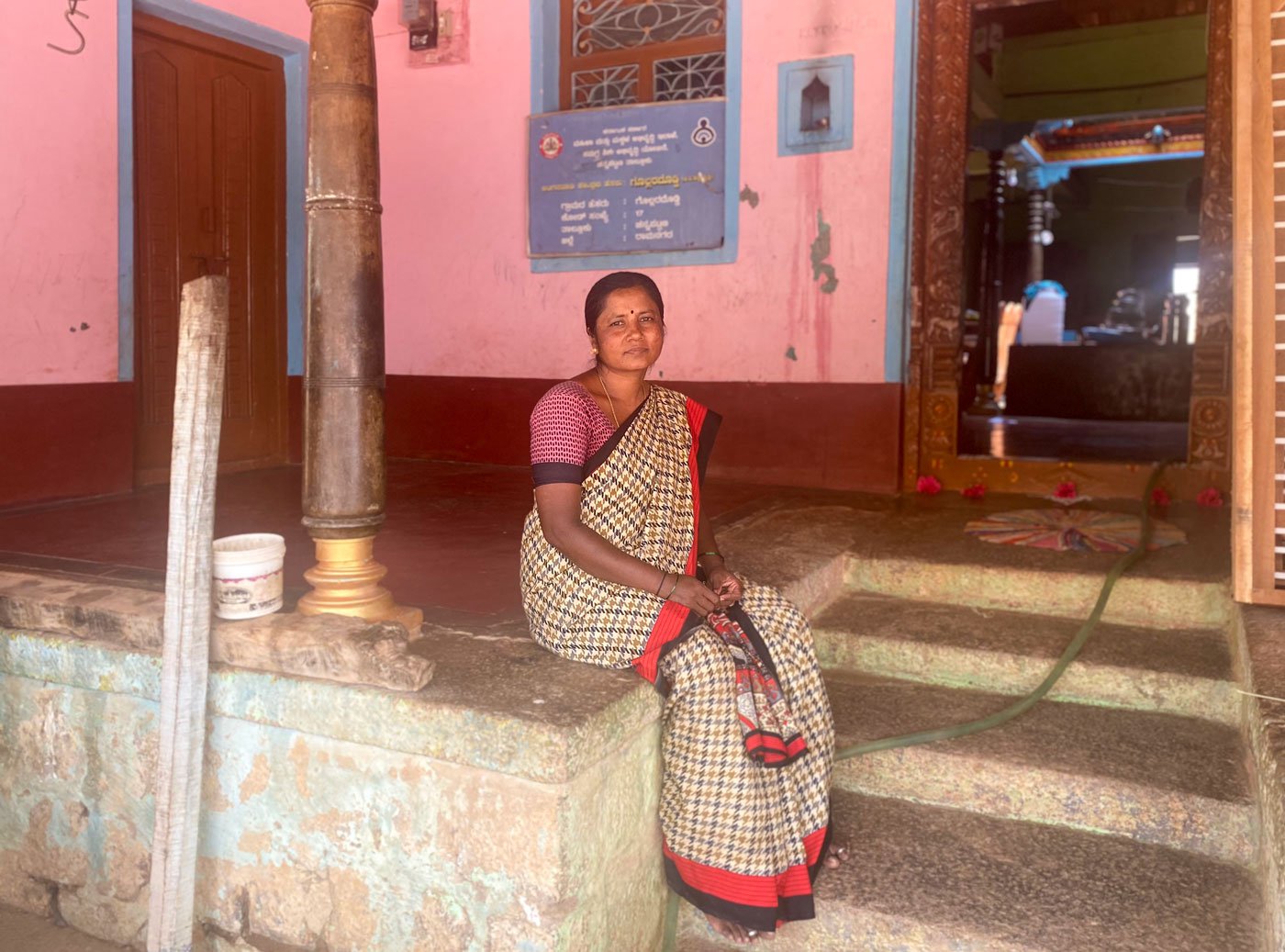
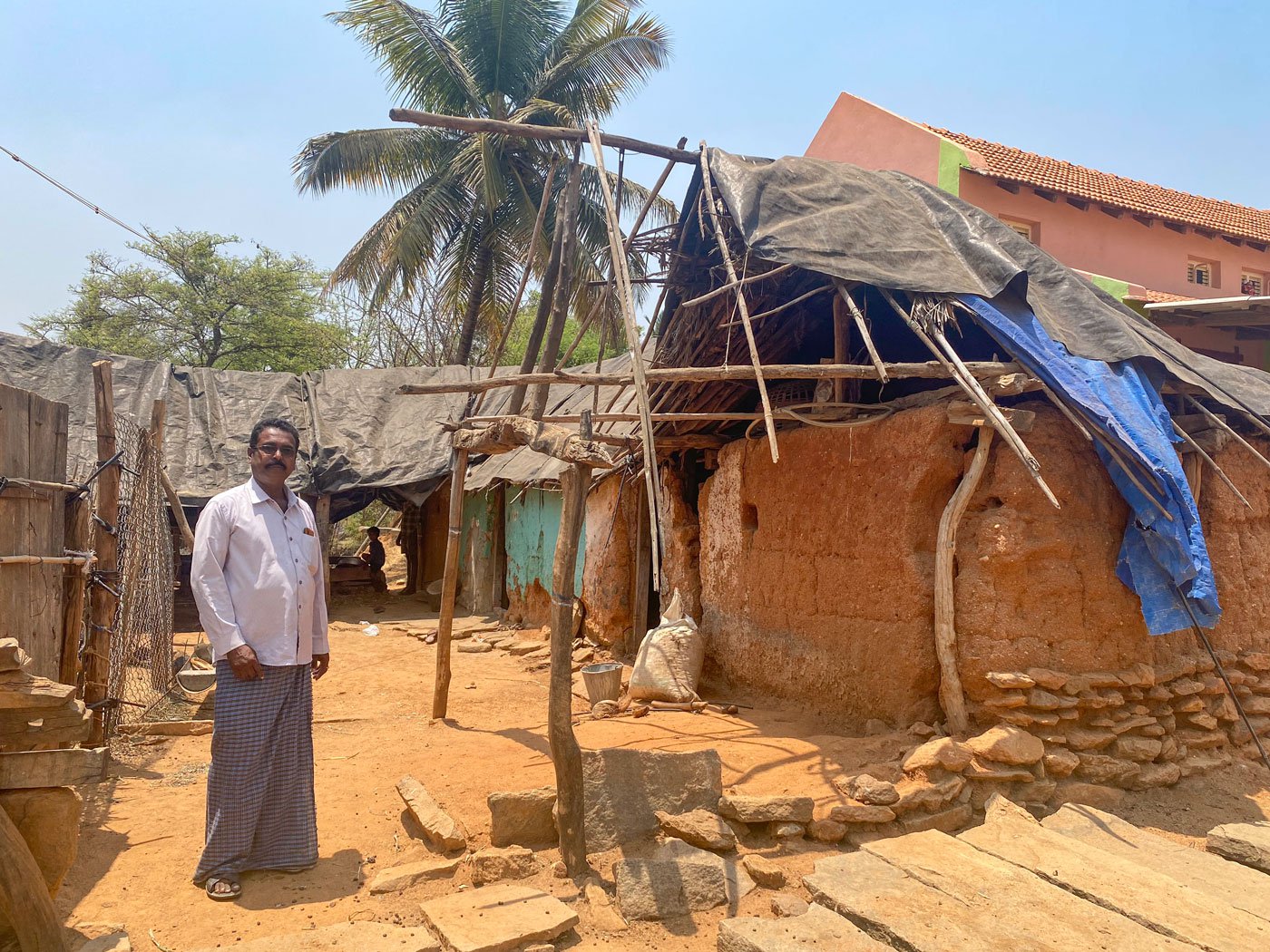
Aralalasandra village's D. Jayalakshmma and her husband Kulla Kariyappa are among the few who have opposed this practice and stopped segeragating
“When I got married, all the women here used to go outside the village during their period and stay in tiny huts, or sometimes just under trees. My husband objected to this practice. I didn’t like following this before my marriage in my parents’ house too. So I stopped doing it. But we still hear taunts from villagers,” says Jayalakshmma, who has studied till Class 10. Her three daughters — ages ranging from 19 to 23 – also don’t stay outside during menstruation.
“They [villagers] used to taunt and harass us. Whenever we faced any difficulty, they said it is because we are not following the customs, we were told that bad things will happen to us. They even avoided us sometimes. In the last few years, due to fear of law, people have stopped ignoring us,” Jayalakshmma’s husband, 60-year-old Kulla Kariyappa, says. He is a retired college lecturer, with MA-B.Ed degrees. “Whenever villagers questioned me and asked me to follow the tradition, I said I am a teacher, I can't behave this way. Our girls have been brainwashed into believing that they have to always make sacrifices,” he adds, angrily.
Like Jayalakshmma, 30-year-old Amrita (not her real name), a mother of two in Aralalasandra, also wants to stop practising the enforced segregation – but is unable to. “Somebody from the top (officials or politicians) have to explain to our village elders. Until then even my five-year-old daughter will be made to do this [when she grows up]. I will have to ask her to do it. I can’t stop this practice alone.”
PARI and CounterMedia Trust's nationwide reporting project on adolescent girls and young women in rural India is part of a Population Foundation of India-supported initiative to explore the situation of these vital yet marginalised groups, through the voices and lived experience of ordinary people.
Want to republish this article? Please write to [email protected] with a cc to [email protected]
